Aniline sulfate
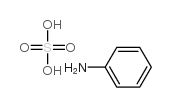
Aniline sulfate structure
|
Common Name | Aniline sulfate | ||
|---|---|---|---|---|
| CAS Number | 542-16-5 | Molecular Weight | 191.20500 | |
| Density | 1.38 | Boiling Point | 184.4ºC at 760 mmHg | |
| Molecular Formula | C6H9NO4S | Melting Point | -6ºC | |
| MSDS | Chinese USA | Flash Point | 70ºC | |
| Symbol |




GHS05, GHS06, GHS08, GHS09 |
Signal Word | Danger | |
| Name | Aniline sulfate |
|---|---|
| Synonym | More Synonyms |
| Density | 1.38 |
|---|---|
| Boiling Point | 184.4ºC at 760 mmHg |
| Melting Point | -6ºC |
| Molecular Formula | C6H9NO4S |
| Molecular Weight | 191.20500 |
| Flash Point | 70ºC |
| Exact Mass | 191.02500 |
| PSA | 109.00000 |
| LogP | 2.27800 |
Synonym:Non Section 2 - COMPOSITION, INFORMATION ON INGREDIENTS
Risk Phrases: 20/21/22 40 50 48/23/24/25 Section 3 - HAZARDS IDENTIFICATION EMERGENCY OVERVIEW
Harmful by inhalation, in contact with skin and if swallowed. Limited evidence of a carcinogenic effect. Very toxic to aquatic organisms. Toxic : danger of serious damage to health by prolonged exposure through inhalation, contact with skin and if swallowed.The toxicological properties of this material have not been fully investigated.Hygroscopic (absorbs moisture from the air).Light sensitive. Potential Health Effects Eye: May cause eye irritation. Skin: May cause skin irritation. Harmful if absorbed through the skin. If absorbed, may cause symptoms similar to those for ingestion. Ingestion: May cause gastrointestinal irritation with nausea, vomiting and diarrhea. The toxicological properties of this substance have not been fully investigated. Methemoglobinemia is characterized by dizziness, drowsiness, headache, shortness of breath, cyanosis (bluish discoloration of skin due to deficient oxygenation of the blood), rapid heart rate and chocolate-brown colored blood. Overexposure may cause methemoglobinemia. Inhalation: May cause respiratory tract irritation. May cause effects similar to those described for ingestion. May cause pulmonary edema and severe respiratory disturbances. The toxicological properties of this substance have not been fully investigated. Chronic: Possible cancer hazard based on tests with laboratory animals. Section 4 - FIRST AID MEASURES Eyes: Immediately flush eyes with plenty of water for at least 15 minutes, occasionally lifting the upper and lower eyelids. Get medical aid immediately. Skin: Get medical aid immediately. Immediately flush skin with plenty of water for at least 15 minutes while removing contaminated clothing and shoes. Ingestion: If victim is conscious and alert, give 2-4 cupfuls of milk or water. Get medical aid immediately. Inhalation: Remove from exposure and move to fresh air immediately. If not breathing, give artificial respiration. If breathing is difficult, give oxygen. Get medical aid. Notes to Physician: Absorption of this product into the body may cause cyanosis (bluish discoloration of skin due to deficient oxygenation of the blood). Moderate degrees of cyanosis need to be treated only by supportive measures: bed rest and oxygen inhalation. For methemoglobinemia, administer oxygen alone or with Methylene Blue depending on the methemoglobin concentration in the blood. Cleansing of the entire contaminated area of the body is of utmost importance. Section 5 - FIRE FIGHTING MEASURES General Information: As in any fire, wear a self-contained breathing apparatus in pressure-demand, MSHA/NIOSH (approved or equivalent), and full protective gear. During a fire, irritating and highly toxic gases may be generated by thermal decomposition or combustion. Extinguishing Media: Use water spray, dry chemical, carbon dioxide, or chemical foam. Section 6 - ACCIDENTAL RELEASE MEASURES General Information: Use proper personal protective equipment as indicated in Section 8. Spills/Leaks: Vacuum or sweep up material and place into a suitable disposal container. Wash area with soap and water. Clean up spills immediately, observing precautions in the Protective Equipment section. Provide ventilation. Section 7 - HANDLING and STORAGE Handling: Wash thoroughly after handling. Avoid contact with eyes, skin, and clothing. Avoid ingestion and inhalation. Use only in a chemical fume hood. Storage: Store in a cool, dry place. Do not store in direct sunlight. Store in a tightly closed container. Section 8 - EXPOSURE CONTROLS, PERSONAL PROTECTION Engineering Controls: Facilities storing or utilizing this material should be equipped with an eyewash facility and a safety shower. Use only under a chemical fume hood. Exposure Limits CAS# 542-16-5: Personal Protective Equipment Eyes: Wear appropriate protective eyeglasses or chemical safety goggles as described by OSHA's eye and face protection regulations in 29 CFR 1910.133 or European Standard EN166. Skin: Wear appropriate protective gloves to prevent skin exposure. Clothing: Wear appropriate protective clothing to prevent skin exposure. Respirators: Follow the OSHA respirator regulations found in 29 CFR 1910.134 or European Standard EN 149. Use a NIOSH/MSHA or European Standard EN 149 approved respirator if exposure limits are exceeded or if irritation or other symptoms are experienced. Section 9 - PHYSICAL AND CHEMICAL PROPERTIES Physical State: Solid Color: Not available. Odor: None reported. pH: Not available. Vapor Pressure: Not available. Viscosity: Not available. Boiling Point: Not available. Freezing/Melting Point: Not available. Autoignition Temperature: Not available. Flash Point: Not available. Explosion Limits, lower: Not available. Explosion Limits, upper: Not available. Decomposition Temperature: Solubility in water: Specific Gravity/Density: 1.3800g/cm3 Molecular Formula: C12H14N2.H2SO4 Molecular Weight: 284.33 Section 10 - STABILITY AND REACTIVITY Chemical Stability: Stable under normal temperatures and pressures. Conditions to Avoid: Incompatible materials, light. Incompatibilities with Other Materials: Strong oxidizing agents. Hazardous Decomposition Products: Carbon monoxide, oxides of nitrogen, oxides of sulfur, carbon dioxide. Hazardous Polymerization: Has not been reported Section 11 - TOXICOLOGICAL INFORMATION RTECS#: CAS# 542-16-5 unlisted. LD50/LC50: Not available. Carcinogenicity: Aniline sulfate - Not listed by ACGIH, IARC, or NTP. Section 12 - ECOLOGICAL INFORMATION Section 13 - DISPOSAL CONSIDERATIONS Dispose of in a manner consistent with federal, state, and local regulations. Section 14 - TRANSPORT INFORMATION IATA Shipping Name: TOXIC SOLID, ORGANIC, N.O.S.* Hazard Class: 6.1 UN Number: 2811 Packing Group: III IMO Shipping Name: TOXIC SOLID, ORGANIC, N.O.S. Hazard Class: 6.1 UN Number: 2811 Packing Group: III RID/ADR Shipping Name: TOXIC SOLID, ORGANIC, N.O.S. Hazard Class: 6.1 UN Number: 2811 Packing group: III Section 15 - REGULATORY INFORMATION European/International Regulations European Labeling in Accordance with EC Directives Hazard Symbols: T N Risk Phrases: R 20/21/22 Harmful by inhalation, in contact with skin and if swallowed. R 40 Limited evidence of a carcinogenic effect. R 48/23/24/25 Toxic : danger of serious damage to health by prolonged exposure through inhalation, contact with skin and if swallowed. R 50 Very toxic to aquatic organisms. Safety Phrases: S 28A After contact with skin, wash immediately with plenty of water. S 36/37 Wear suitable protective clothing and gloves. S 45 In case of accident or if you feel unwell, seek medical advice immediately (show the label where possible). S 61 Avoid release to the environment. Refer to special instructions/safety data sheets. WGK (Water Danger/Protection) CAS# 542-16-5: No information available. Canada CAS# 542-16-5 is listed on Canada's DSL List. CAS# 542-16-5 is not listed on Canada's Ingredient Disclosure List. US FEDERAL TSCA CAS# 542-16-5 is listed on the TSCA inventory. SECTION 16 - ADDITIONAL INFORMATION N/A |
| Symbol |




GHS05, GHS06, GHS08, GHS09 |
|---|---|
| Signal Word | Danger |
| Hazard Statements | H301 + H311 + H331-H317-H318-H341-H351-H372-H410 |
| Precautionary Statements | Missing Phrase - N15.00950417-P260-P280-P302 + P352 + P312-P304 + P340 + P312-P305 + P351 + P338 + P310 |
| Hazard Codes | T: Toxic;N: Dangerous for the environment; |
| Risk Phrases | R23/24/25 |
| Safety Phrases | S26-S27-S36/37/39-S45-S61-S63 |
| RIDADR | UN 2811 6.1/PG 3 |
| WGK Germany | 3 |
| Packaging Group | III |
| Hazard Class | 6.1 |
| Precursor 6 | |
|---|---|
| DownStream 10 | |
|
Polyamide nanofiltration membranes to remove aniline in aqueous solutions.
Environ. Technol. 35(9-12) , 1175-81, (2014) Aniline is commonly used in a number of industrial processes. It is known to be a harmful and persistent pollutant and its presence in wastewater requires treatment before disposal. In this paper, the... |
|
|
Design, synthesis, and evaluation of (E)-N-substituted benzylidene–aniline derivatives as tyrosinase inhibitors
Eur. J. Med. Chem. 57 , 383-90, (2012) We attempted to design and synthesize (E)-N-substituted benzylidene-hydroxy or methoxy-aniline derivatives and to evaluate their inhibitory effect on tyrosinase activity and anti-melanogenesis activit... |
|
|
Novel amphiphilic polymeric ionic liquid-solid phase micro-extraction membrane for the preconcentration of aniline as degradation product of azo dye Orange G under sonication by liquid chromatography-tandem mass spectrometry.
J. Chromatogr. A. 1349 , 24-9, (2014) A novel amphiphilic polymeric ionic liquid membrane containing a hydrophilic bromide anion and a hydrophobic carbonyl group was synthesized in dimethylformamide (DMF) systems using the ionic liquid 1-... |
| Benzenamine,sulfate |
| ANILINE SULPHATE |
| Anilinedihydrosulfate |
| Anilinium Sulfate |
| dianilinium sulphate |
| Anilin,Sulfat |
| MFCD00013110 |
| dianilunium sulphate |
| EINECS 208-805-0 |
| ANILINE SULFATE REAGENT |
| anilin sulfate |
| Dianilinium sulfate |
| aniline,sulfate |
| aniline sulfate salt |
 CAS#:7664-93-9
CAS#:7664-93-9 CAS#:74638-06-5
CAS#:74638-06-5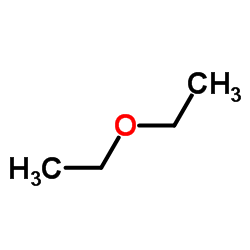 CAS#:60-29-7
CAS#:60-29-7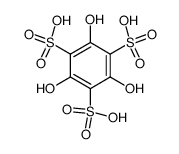 CAS#:716306-63-7
CAS#:716306-63-7 CAS#:100-65-2
CAS#:100-65-2 CAS#:4275-05-2
CAS#:4275-05-2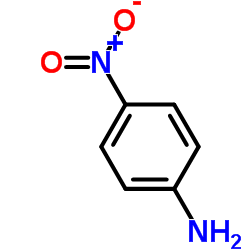 CAS#:100-01-6
CAS#:100-01-6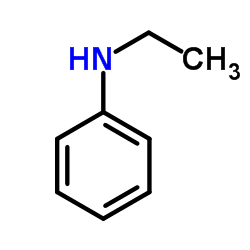 CAS#:103-69-5
CAS#:103-69-5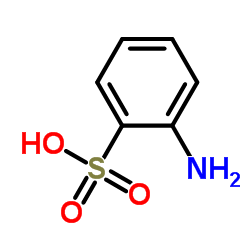 CAS#:88-21-1
CAS#:88-21-1 CAS#:121-47-1
CAS#:121-47-1 CAS#:121-57-3
CAS#:121-57-3 CAS#:76-49-3
CAS#:76-49-3 CAS#:603-40-7
CAS#:603-40-7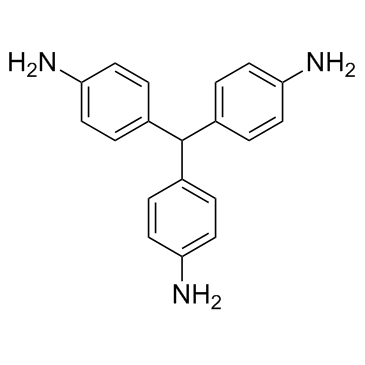 CAS#:548-61-8
CAS#:548-61-8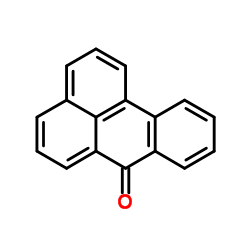 CAS#:82-05-3
CAS#:82-05-3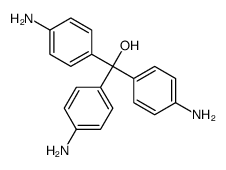 CAS#:467-62-9
CAS#:467-62-9
